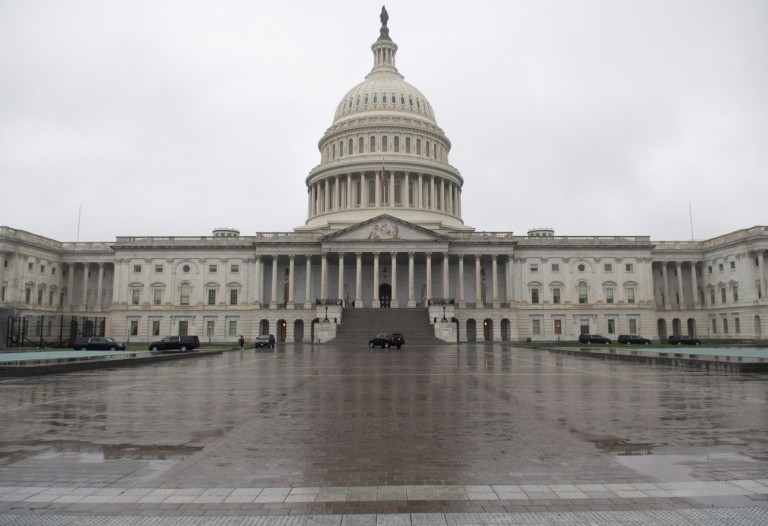After days of negotiations, the Senate has passed a historic $2.2 trillion plan to stimulate the US economy as it faces soaring unemployment and recession caused by the coronavirus pandemic.
The spending package approved late Wednesday is set to be the largest such emergency measure in American history, and doles out cash in a variety of ways to a variety of groups — from everyday consumers to major corporations.
Here’s a rundown of who will get what in the bill, which must still be approved by the House of Representatives and signed by President Donald Trump:
– Cash to Americans –
In a bid to get Americans spending again, the bill will give single taxpayers $1,200 and married couples double that. An additional $500 will be apportioned per child.
The benefits would be reduced by a variable amount for people making more than $75,000 per-year and double that for couples.
People making more than $99,000 are ineligible and there are similar cutoffs for people with only one child and joint filers with no children.
Read Also: US Offers $15m For Arrest Of Venezuela President Maduro
– Expanded unemployment assistance –
With jobless claims spiking to 3.3 million in the week ending March 21, the bill greatly expands unemployment coverage for Americans.
A flat $600 per week is provided for four months to jobless people in addition to unemployment assistance they receive through state programs, whose payouts vary. The bill also pays for another 13 weeks of unemployment benefits to continue once state benefits, which are time-limited, are exhausted.
Meanwhile, a separate program lasting through the end of the year is being created to help those unable to work due to the pandemic but not eligible for unemployment benefits, such as people employed in the gig economy like ride-share drivers, along with the self-employed.
– For corporations and businesses –
The Senate bill allocates huge amounts to rescue American companies, including $377 billion in assistance to small businesses and $500 billion for loans to larger businesses and states.
Slammed by a drop in travel and border closures that have forced them to slash routes, the airline industry had asked for a $50 billion bailout, and appears to have received it.
The bill allocates $25 billion to airlines, $4 billion to air freight companies and $3 billion to contractors to pay wages, in addition to another $25 billion in loans and loan guarantees to airlines and $4 billion to air freight.
Meanwhile, another $17 billion in loans and guarantees goes to “businesses critical to maintaining national security.” The Washington Post reported that category includes Boeing, which has been struggling both with the grounding of its 737 MAX aircraft and the hit to air travel brought on by the pandemic.
– Money for healthcare –
Few believe the economy will recover until COVID-19 is brought under control, and to that end, the bill puts $172.1 billion into the healthcare system.
That includes $27 billion to pay for research into vaccines and treatments for the virus and another $100 billion to pay hospitals’ and healthcare providers’ lost revenue or unreimbursed expenses related to the outbreak.
– Student loan payments deferred –
Americans often graduate university burdened with debt taken out to pay tuition, and the bill suspends debt payments and interest accrual through September 30.
The Department of Education will also get $30.8 billion to support schools and universities, which are closed across the country.
– No presidents or lawmakers –
The one group barred from getting any of the money is the country’s leadership.
The president, vice president, members of Congress, cabinet members and their families are excluded from receiving Treasury loans or investments in businesses they own at least 20 percent of.
Democrats have repeatedly accused Trump of using his position to increase his businesses’ profits, and the prohibition is seen as a response to that.
AFP

